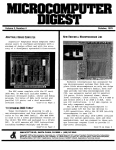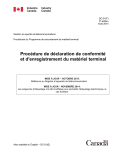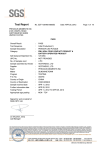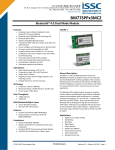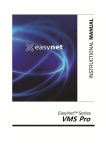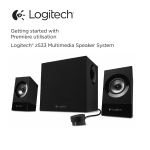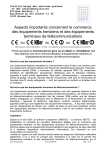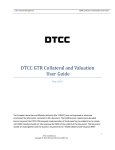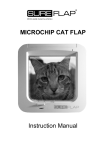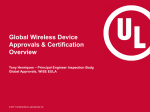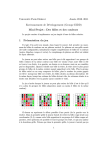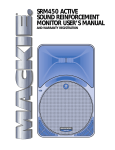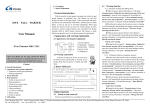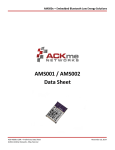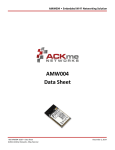Download Toll-Free: (888) 364-2378 FCC Labeling of
Transcript
Toll-Free: (888) 364-2378 California Minnesota New York Oregon Texas Labeling of Wireless Devices Washington 2012-5-4 FCC User Manual Info FCC ID 47 CFR 15.21: The users manual or instruction manual for an intentional or unintentional radiator shall caution the user that changes or modifications not expressly approved by the party responsible for compliance could void the user’s authority to operate the equipment. 47 CFR 2.925(a)(1): FCC Identifier consisting of the two elements in the exact order specified in § 2.926. The FCC Identifier shall be preceded by the term FCC ID in capital letters on a single line, and shall be of a type size large enough to be legible without the aid of magnification. Example: FCC ID XXX123. XXX—Grantee Code 123— Equipment Product Code Statement 47 CFR 15.19(a)(3): All other devices shall bear the following statement in a conspicuous location on the device: This device complies with part 15 of the FCC Rules. Operation is subject to the following two conditions: • This device may not cause harmful interference, and • this device must accept any interference received, including interference that may cause undesired operation. 47 CFR 15.19(a)(5): When the device is so small or for such use that it is not practicable to place the statement specified under paragraph (a) of this section on it, the information required by this paragraph shall be placed in a prominent location in the instruction manual or pamphlet supplied to the user or, alternatively, shall be placed on the container in which the device is marketed. However, the FCC identifier or the unique identifier, as appropriate, must be displayed on the device. Northwest EMC www.nwemc.com In cases where the manual is provided only in a form other than paper, such as on a computer disk or over the Internet, the information required by this section may be included in the manual in that alternative form, provided the user can reasonably be expected to have the capability to access information in that form. RF Safety For devices operated greater than 20cm from the user, cautionary mobile exposure statement should be in the manual. MPE estimates are required for devices operating greater then 20 cm from the user. Here is an excerpt from OET Guide 65C that describes the requirement: “For other transmitters which do not normally operate next to persons, such as a wireless LAN transmitter located on a desktop, certain operating and usage instructions may be included in the operator’s manual to caution users to maintain a specified distance from the transmitter to ensure compliance.” For devices capable of body-worn operation, the user manual must contain statements that describe permissible body-worn operation. SAR Testing is required for devices operating above Toll-Free: (888) 364-2378 25 mW and used closer than 20cm from the user. Here is an excerpt from OET Guide 65C that describes the requirement: “In order for users to be aware of the bodyworn operating requirements for meeting RF exposure compliance, operating instructions and caution statements should be included in the manual. The information should allow users to make informed decisions on the type of body-worn accessories and operating configurations that are appropriate for the device. The following are examples of typical statements that provide end-users with the necessary information about body-worn accessories: 1. For a product that has the potential to be used in a body worn configuration and has been tested and certified with a specific accessory device(s): “For body worn operation, this phone has been tested and meets the FCC RF exposure guidelines when used with the (manufacturer name) accessories supplied or designated for this product. Use of other accessories may not ensure compliance with FCC RF exposure guidelines.” 2. For a product that has the potential to be used in a body worn configuration and has not been certified with a specific accessory device(s): “For body worn operation, this phone has been tested and meets FCC RF exposure guidelines when used with an accessory that contains no metal and that positions the handset a minimum of (specified distance) from the body. Use of other accessories may not ensure compliance with FCC RF exposure guidelines.” Northwest EMC www.nwemc.com 3. For a product that has the potential to be used in a body worn configuration with future manufacturer designed accessories: “For body worn operation, this phone has been tested and meets the FCC RF exposure guidelines when used with a (manufacturer name) accessory designated for this product or when used with an accessory that contains no metal and that positions the handset a minimum of (specified distance) from the body.” Toll-Free: (888) 364-2378 IC IC ID and Equipment Label RSS-Gen, Issue 3, December 2010, Section 5.2 Every unit of Category I radio apparatus certified for marketing and use in Canada shall bear a permanent label on which is indelibly displayed the model number and Industry Canada certification number of the equipment model (transmitter, receiver, or inseparable combination thereof). Each model shall be identified by a unique Combination of a model number and a certification number, which are assigned as described below in this section. The label shall be securely affixed to a permanently attached part of the device, in a location where it is visible or easily accessible to the user, and shall not be readily detachable. The label shall be sufficiently durable to remain fully legible and intact on the device in all normal conditions of use throughout the device’s expected lifetime. These requirements may be met either by a separate label or nameplate permanently attached to the device or by permanently imprinting or impressing the label directly onto the device. The label text shall be legible without the aid of magnification, but is not required to be larger than 8- point font size. If the device is too small to meet this condition, the label information may be included in the user manual upon agreement with Industry Canada. The label for medical implants designed to be used within the human body shall be placed on the package and in the user manual. The model number is assigned by the applicant and shall be unique to each model of radio apparatus under that applicant’s responsibility. Northwest EMC www.nwemc.com The model number shall be displayed on the label preceded by the text: “Model:”, so it appears as follows: Model: model number assigned by applicant The certification number is made up of a Company Number (CN) assigned by Industry Canada’s Certification and Engineering Bureau followed by the Unique Product Number (UPN), assigned by the applicant. The certification number shall appear as follows: IC: XXXXXX-YYYYYYYYYYY where: • • • • XXXXXX-YYYYYYYYYYY is the certification number; XXXXXX is the Company Number (CN) assigned by Industry Canada, made of at most 6 alphanumeric characters (AZ, 0-9), including a letter at the end of the CN to distinguish between different company addresses; YYYYYYYYYYY is the Unique Product Number (UPN) assigned by the applicant, made of at most 11 alphanumeric characters (A-Z, 0-9); and the letters “IC” (Industry Canada) are to indicate the Industry Canada certification number, but are not part of the certification number. Permitted alphanumerical characters used in the CN and UPN are limited to capital letters (A-Z) and numerals (0-9). Example: A company has been assigned a CN of “21A” and wishes to use a UPN of “WILAN3” for one of its products. The full Industry Canada certification number of this product would thus be: IC: 21A-WILAN3. Toll-Free: (888) 364-2378 The use of symbols to represent characters in the certification number or the model number that are to be considered indeterminate (“wildcard” characters) is not permitted. Example: In the hypothetical model number 47XP-820K/A21xx, a manufacturer wishes to use the characters “xx” as wildcards to indicate that these two characters in the model number are not fixed but represent a range of characters decided by the manufacturer. This practice is not permitted. However, this same sequence of symbols can be used as a valid model number, if it identifies a single equipment model. Category I equipment that is not labeled with the model number and the certification number as described above is not considered certified. Category II equipment shall be labeled in accordance with the requirements of RSS310. Note that the provisions regarding model numbers in this section also apply to the RSS310 labeling requirements. User Manual Info: RSS-Gen, Issue 3, December 2010, Section 5.3 Required Notices to the User Radio apparatus shall comply with the requirements to include required notices or statements to the user of equipment with each unit of equipment model offered for sale. The required notices are specified in the RSS documents (including RSS-Gen) applicable to the equipment model. These notices are required to be shown in a conspicuous location in the user manual for the equipment, or to be displayed on the equipment model. If more than one notice is Northwest EMC www.nwemc.com required, the equipment model(s) to which each notice pertains should be identified. Suppliers of radio apparatus shall provide notices and user information in both English and French. RSS-Gen, Issue 3, December 2010, Section 7.1.1 External Amplifiers (ii) The RF power amplifier shall be marketed only for use with the device with which it has been certified, so long as the following statement is included on the packaging and in the user manual: Under Industry Canada regulations, this radio frequency power amplifier (insert Industry Canada certification number of radio frequency power amplifier) may only be used with the transmitter with which the amplifier has been certified by Industry Canada. The certification number for the transmitter with which this amplifier is permitted to operate is IC:XX…X-YY…Y. RSS-Gen, Issue 3, December 2010, Section 7.1.2 Transmitter Antenna User manuals for transmitters shall display the following notice in a conspicuous location: Under Industry Canada regulations, this radio transmitter may only operate using an antenna of a type and maximum (or lesser) gain approved for the transmitter by Industry Canada. To reduce potential radio interference to other users, the antenna type and its gain should be so chosen that the equivalent isotropically radiated power (e.i.r.p.) is not more than that necessary for successful communication. The above notice may be affixed to the device instead of displayed in the user manual. Toll-Free: (888) 364-2378 User manuals for transmitters equipped with detachable antennas shall also contain the following notice in a conspicuous location: This radio transmitter (identify the device by certification number, or model number if Category II) has been approved by Industry Canada to operate with the antenna types listed below with the maximum permissible gain and required antenna impedance for each antenna type indicated. Antenna types not included in this list, having a gain greater than the maximum gain indicated for that type, are strictly prohibited for use with this device. Immediately following the above notice, the manufacturer shall provide a list of all antenna types approved for use with the transmitter, indicating the maximum permissible antenna gain (in dBi) and required impedance for each. RSS-Gen, Issue 3, December 2010, Section 7.1.3 User Manual Notice for Licence-Exempt Radio Apparatus User manuals for license-exempt radio apparatus shall contain the following or equivalent notice in a conspicuous location in the user manual or alternatively on the device or both. This device complies with Industry Canada license-exempt RSS standard(s). Operation is subject to the following two conditions: (1) this device may not cause interference, and (2) this device must accept any interference, including interference that may cause undesired operation of the device. RSS-Gen, Issue 3, December 2010, Section 7.1.4 Radio Apparatus Containing Digital Circuits (ICES-003) Radio apparatus containing digital circuitry which Northwest EMC www.nwemc.com can function separately from the operation of a transmitter or an associated transmitter, shall comply with ICES-003. In such cases, the labeling requirements of the applicable RSS apply, rather than the labeling requirements in ICES-003. RSS-102, Issue 4, March 2010, Section 2.6 The applicant is responsible for providing proper instructions to the user of the radio device, and any usage restrictions, including limits of exposure durations. The user manual shall provide installation and operation instructions, as well as any special usage conditions, to ensure compliance with SAR and/or RF field strength limits. For instance, compliance distance shall be clearly stated in the user manual. The user manual of devices intended for controlled use shall also include information relating to the operating characteristics of the device; the operating instructions to ensure compliance with SAR and/or RF field strength limits; information on the installation and operation of accessories to ensure compliance with SAR and/or RF field strength limits; and contact information where the user can obtain Canadian information on RF exposure and compliance. Other related information may also be included. Toll-Free: (888) 364-2378 EU Obligations associated with the placing on the market of radio equipment and telecommunications terminal equipment (R&TTE directive) This document gives guidance of the legal provisions associated with the placing on the market of R&TTE equipment. However, in fact the applicable legislative texts have in any cases priority. • Definitions TTE - Telecommunication terminal equipment Class 1 radio equipment - Radio equipment which can be placed on the market and be put into service without restrictions. Class 2 radio equipment - All radio equipment not falling into the definition of Class 1 Remarks • • • Please note that some equipment is at the same time radio equipment and telecommunications terminal equipment. In that case the combined requirements are applicable (eg: GSM, TETRA terminal, PSTN-DECT telephone …). The indication ¤ in a cell in the overview table means that the obligation is mandatory for that kind of equipment and that the related information must be put on the indicated place. • (1) Please note that the conformity marking must be affixed to all accompanying documents including the users instructions The indication √ in a cell in the overview table means that the information must Northwest EMC www.nwemc.com be supplied, but that one has the choice between the indicated options where to put it. • (2) The Declaration of Conformity must be supplied with each product; it can be a separated leaflet or be printed in the users manual or packaging. The symbol “NBnr” used on the following pages stands for the identification number of the notified body involved during the conformity assessment procedure. This identification number consists of four digits. The notified bodies listed under the R&TTE and there identification number are mentioned on the European Commissions website. Helpful links in R&TTE matters • European Commission http://ec.europa.eu/enterprise/sectors/ rtte/documents/guidance/index_en.htm • Class 1 radio equipment list www.ero.dk/rtte • Click on the “Sub class” number to get the exact parameters to respect to fall in • • Class 1 - The Radio and Telecommunications Terminal Equipment Compliance Association (R&TTE CA): http://www.rtteca.com/. R&TTE CA issues technical guidance notes related to compliance of equipment. List of country codes (ISO 3166) http://www.iso.org/iso/country_codes. htm The use of the 2-letter abbreviations of this code list is strongly recommended (see also last page). Toll-Free: (888) 364-2378 Conforminity with the essential requirements Identification CE-Marketing NB- Identification # ¤ After successfully undergoing a conformity assessment procedure and having constituted the technical documentation. ¤ The model, manufacturer’s name and the serial number (or batch number) are indicated. CE marking is present. ¤ Indication of any restrictions of use Language Conformity with the essential requirements ¤ ¤ ¤ The notified body (NB) identification number is indicated if it is involved in the conformity assessment procedure ¤ ¤ ¤ ● ¤ The alert sign must be indicated as soon as a restriction on use applies to the equipment and must follow the CE marking. ¤ ¤ ¤ ! ¤ The responsible person for placing the equipment on the market must notify its intention at least 4 weeks before the equipment is first placed on the national market. The form has to be sent to the responsible national authority. Links to the national authority: http://www.europa.eu.int/comm/enterprise/rtte/ weblinks.htm Written description or description in visual form or by the use of terms known to the public. Cordless telephone with answering machine. Garage door remote control Illustration on the packaging, photo in the user manual, pictogram, equipment visible through the packaging. Baby monitor, Modem, PMR, GSM terminal... ¤ Notification Indication of the countries where the equipment is intended to be used Examples ¤ Alert-sign Indication of the intended use of the equipment Where? Packaging Class 2 Class 1 TTE Radio Equip. Possibilities of fulfilling the obligation Users Instructions Applicable to: Equipment Obligation ¤ ¤ ¤ √ √ * This equipment may be operated in GB, France. GB, FR, DE, IT, CH Written description or description in abbreviated written form or with a pictogram. Written description √ ¤ √ √ ¤ √ * * IT CH FR AT FI GB PL DE PT The use of this equipment requires a license in CH, HU, GB. *In the official language(s) of the region in which the equipment is placed on the market (multilingual region: all languages). Northwest EMC www.nwemc.com Toll-Free: (888) 364-2378 Indications of the interfaces of the networks to which the equipment is intended to be connected Equipment Class 2 Class 1 TTE Radio Equip. Where? Examples Language Possibilities of fulfilling the obligation Packaging Applicable to: Users Instructions Obligation Written description or by use of terms known to the public This telephone is intended for connection to the FR-analogue network. ISDN, GSM, ADSL,... √ ¤ Declaration of Conformity (DoC) √ √ * Hereby, [Name of manufacturer], declares that this [type of equipment] is in compliance with the essential requirements and other relevant provisions of Directive 1999/5/EC. The declaration of conformity may be consulted at www.address.com/DoC.pdf. Either following indication is present with the equipment (TCAM6(00)30): ¤ “Hereby, [Name of manufacturer], declares that this [type of equipment] is in compliance with the essential requirements and other relevant provisions of Directive 1999/5/EC.” to which must be added: • • • the exact location from which a copy of the DoC may be obtained (internet or postal address) or a copy of the DoC in the original language is enclosed with the equipment. or a copy of the full DoC is attached √ (2) √ * Hereby, [Name of manufacturer], declares that this [type of equipment] is in compliance with the essential requirements and other relevant provisions of Directive 1999/5/EC. and the DoC in the language of the manufacturer (eg. Swedish). The DoC must at least contain the name and the address of the manufacturer, the description of the equipment, the applied standards, date, identity and signature of its author. * In the official language(s) of the region in which the equipment is placed on the market (multilingual region: all languages). Northwest EMC www.nwemc.com Toll-Free: (888) 364-2378 Conformity Assessment Procedures and Marking Procedure Applicable to Equipment Without Radio Part II Internal Production Control III Internal Production Control Plus Specific Apparatus Tests IV V Technical Construction File Full Quality Assurance Terminal Equipment With Radio Part Radio Equipment including a Transmitter not complying or only partially complying with Harmonised Standards All Equipment covered by the R&TTE Directive Marking of equipment containing an R&TTE component Equipment containing an R&TTE component must be marked in the following way: • Equipment, which at the time of placing on the market contains as an integral part an R&TTE component, which should not be removed by the user, should be marked according to the R&TTE Directive. In addition in its user manual it should comply with the R&TTE Directive and e.g. indicate geographic limitations of use; Northwest EMC www.nwemc.com Marking TTE Class 1 Class 2 Receivers Radio Equipment including a Transmitter complying with Harmonised Standards Terminal Equipment Role of the notified body NBnr (if applicable) ! Identification of the Series of Essential Radio Test Suites NBnR NBnR ! Opinion on the conformity of the Equipment based on the Review of the Technical Construction file established by the Manufacturer NBnR NBnR ! Certification of the Manufacturer’s Quality System NBnR NBnR ! • Equipment, which provides for the capability that users insert R&TTE components, but in themselves are not covered by the R&TTE Directive (e.g. lap top computers) should not be marked according the R&TTE Directive. Toll-Free: (888) 364-2378 List of National Codes Country ISO 3166 2 Letter Code Austria AT Belgium BE Cyprus CY Czech Republic CZ Denmark DK Estonia EE Finland FI France FR Germany DE Greece GR Hungary HU Ireland IE Italy IT Latvia LV Lithuania LT Luxembourg LU Malta MT Netherlands NL Poland PL Portugal PT Slovakia SK Slovenia SI Spain ES Sweden SE United Kingdom GB Iceland IS Liechtenstein LI Norway NO Switzerland CH Bulgaria BG Romania RO Turkey TR Australia / New Zealand Compliance and labeling booklets can be found here: http://www.acma.gov.au/WEB/STANDARD/ pc=PC_300427 Northwest EMC www.nwemc.com Recommended Form of Declaration of Conformity (EN 45014) Declaration of Conformity We [Name of Manufacturer or his Authorized Representative][address] declare under our own responsibility that the product [model, descriptions, versions, supplementary characteristics] to which this declaration refers conforms with the relevant standards or other standardising documents [Titles, Dates of Publication of Documents Mentioned] according to the regulations in [if necessary: Directives, Main Regulations]. [Place, Date] [Name and Signature of Person Responsible]










